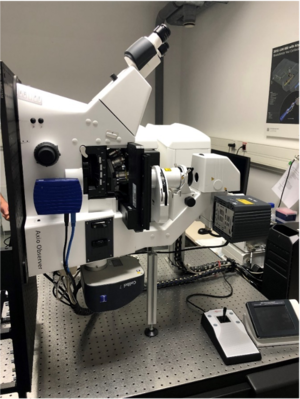Dr. Tonni Grube Andersen
Research focus
In my group, we study development of roots and communication with their physical and biological environments at the single-cell level. We use genomics and state-of-the-art fluorescence-based microscopy in combination with near-native physiological set-ups that involve precise control of nutrient and light availability. Our platform is flipped 90 degrees to allow long-term root imaging and is equipped with LED light illumination and fluidic media exchange systems.

The five most important publications
- Andersen TG, Molina D, Kilian J, Franke RB, Ragni L, Geldner N (2021) Tissue-Autonomous Phenylpropanoid Production Is Essential for Establishment of Root Barriers. Curr Biol 31(5):965-977 e965. doi: 10.1016/j.cub.2020.11.070.
- Andersen TG, Naseer S, Ursache R, Wybouw B, Smet W, De Rybel B, Vermeer JEM, Geldner N (2018) Diffusible repression of cytokinin signalling produces endodermal symmetry and passage cells. Nature 555(7697):529-533. doi: 10.1038/nature25976.
- Barberon M, Vermeer JE, De Bellis D, Wang P, Naseer S, Andersen TG, Humbel BM, Nawrath C, Takano J, Salt DE, Geldner N (2016) Adaptation of Root Function by Nutrient-Induced Plasticity of Endodermal Differentiation. Cell 164(3):447-459. doi: 10.1016/j.cell.2015.12.021.
- Andersen TG, Nour-Eldin HH, Fuller VL, Olsen CE, Burow M, Halkier BA (2013) Integration of biosynthesis and long-distance transport establish organ-specific glucosinolate profiles in vegetative Arabidopsis. Plant Cell 25(8):3133-3145. doi: 10.1105/tpc.113.110890.
- Nour-Eldin HH, Andersen TG, Burow M, Madsen SR, Jorgensen ME, Olsen CE, Dreyer I, Hedrich R, Geiger D, Halkier BA (2012) NRT/PTR transporters are essential for translocation of glucosinolate defence compounds to seeds. Nature 488(7412):531-534. doi: 10.1038/nature11285.
Dr. Tonni Grube Andersen

Department of Plant Microbe Interactions
Max Planck Institute for Plant Breeding Research